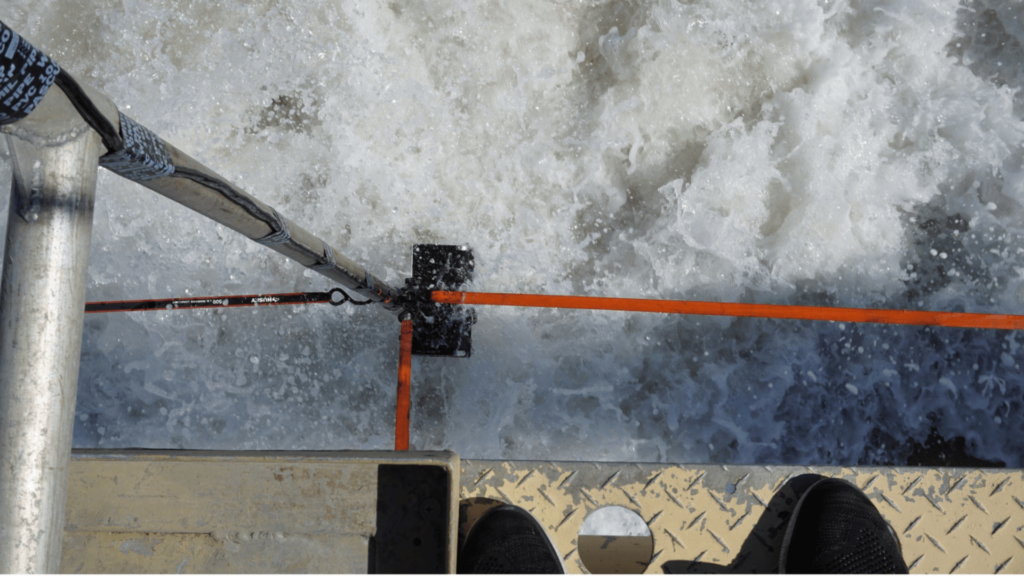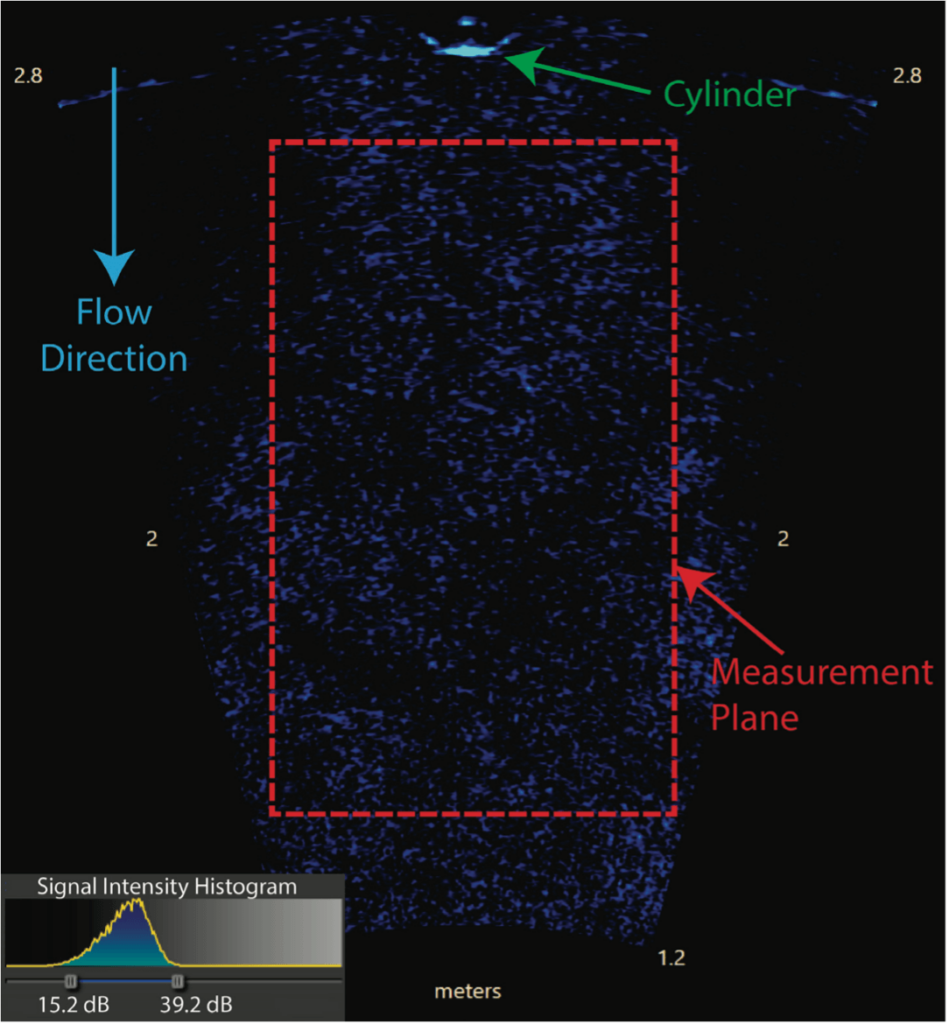Acoustic Camera Systems and Methods
Advanced fluid flow analysis in large-scale,
high-turbidity environments

This acoustic camera system addresses the challenge of monitoring and analyzing fluid flow in highly turbid environments with low visibility, allowing researchers and engineers to visualize and measure water flow characteristics where traditional optical methods won’t work. By correlating particle positions between images, the flow velocity, direction, and vorticity are calculated. Unlike traditional acoustic methods that measure flow at a single point, this new approach allows scientists to capture a full planar view of fluid movement across a large area, particularly in environments with cloudy liquids. It’s particularly useful for large-scale analysis of water movement in real-world settings, like rivers, coastal areas, or industrial water systems.
Accurately measuring and analyzing fluid flow is difficult in environments with high turbidity where the fluid is cloudy. Traditional optical methods, such as optical particle image velocimetry (PIV), struggle in such conditions because they rely on clear water. They also require complex, bulky equipment like lasers and precisely calibrated cameras. Existing acoustic methods (e.g., acoustic Doppler velocimeters [ADVs]) can measure flow velocity but cannot capture detailed two-dimensional (2D) planar velocity measurements needed for advanced analysis like calculating spatial gradients or vorticity.
Benefits:
- Effective: Creates 2D planar velocity maps by capturing a full planar view of fluid movement across large areas and is unaffected by lack of fluid clarity
- Field deployable: Uses equipment that is less complex and less bulky than traditional methods (e.g., PIV) to enable use in the field
- Scalable: Supports comprehensive flow analysis in real-world settings such as rivers, coastal areas, and industrial water systems
- Accurate: Showed average errors less than ±2 mm/s in laboratory study.
Applications:
This acoustic camera system can be used for monitoring dredging operations, studying entrainment risk, and quantifying 2D velocity fields by particles suspended in the water for:
- Navigation infrastructure, channels, ports, and harbors
- Offshore energy such as oil and gas pipeline installations and maintenance
- Research such as large-scale turbid flows in lake circulation and coastal flows

Patents
- 12072220 (Search patent)
